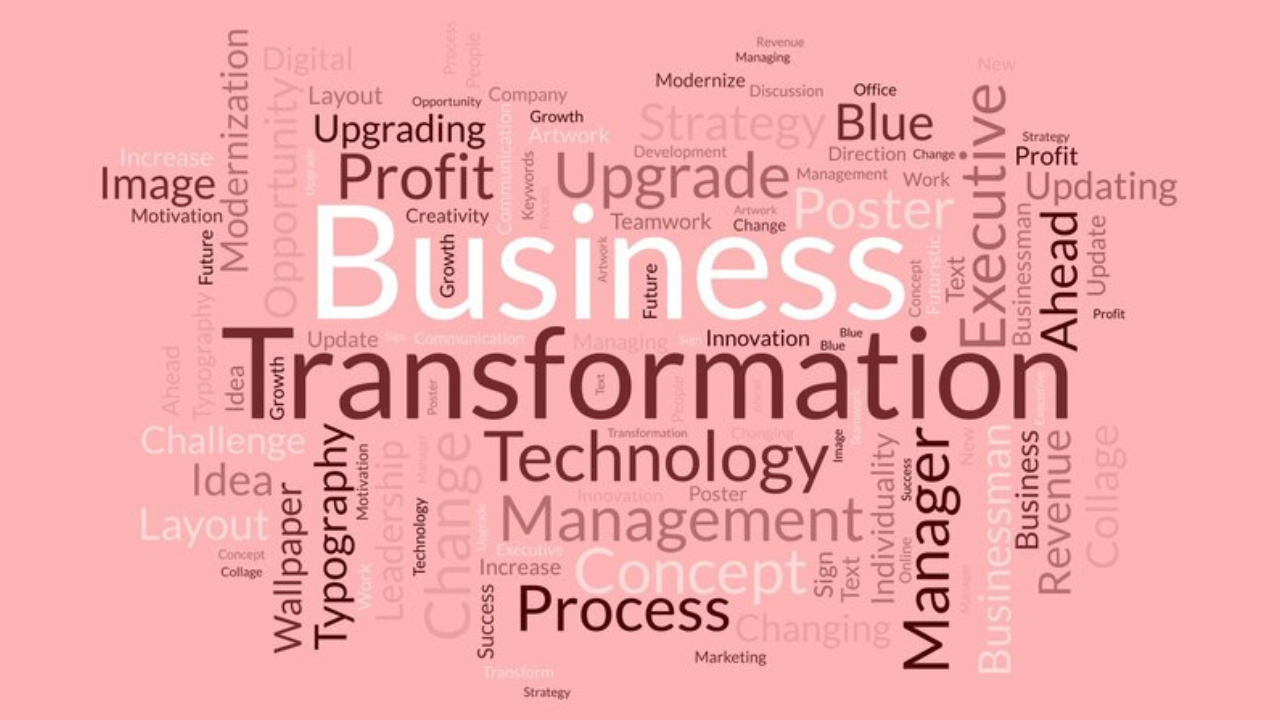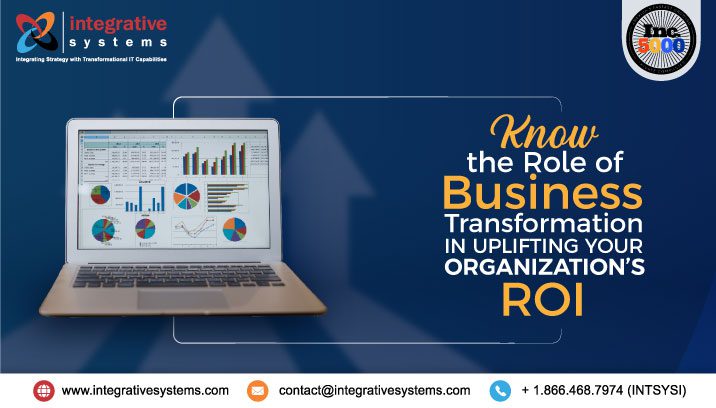Business Transformation should be approached not like an emergency medical life-and-death scenario but like an elective medical intervention that should be revisited from time to time to maintain optimum business health. The business transformation aims to make changes in processes or technology within an organization so that they can better align with business strategy and company vision.
What is Business Transformation?
In simple words, business transformation is all about identifying resources, be it human or non-human/technical, that are not working to their maximum capacity and finding alternate solutions. These alternate solutions are sought for multiple objectives like
increasing productivity, gaining market share, increasing revenue, better customer satisfaction, or reducing inefficient expenditure.
Business transformation is a positive change that brings about implementing the best thought processes and systems within an organization that can bring measurable improvements in an organization’s work effectiveness.
However, it is not as easy as it looks because multiple factors are involved in running an organization. Say an organization decides to replace an outdated technological system that has been in place for decades, and the staff is such that they fear change. Now, imagine the tough decision the leader has to take to disrupt the process while dealing delicately with people to come out positively. And this Transformation can take months of uncertainty!
Hence, transformation requires a vision, an execution plan, a deadline, and a firm footing to stick with the vision no matter what others (majorly other people in the company) say. Only then a business transformation is possible.
Besides, it is not just the responsibility of the leader to think, but every employee should keep suggesting ways to bring about transformation. Who knows, one’s idea might be taken up, and it could transform the business!!
Our 4 Step Strategy to Business Transformation at Integrative Systems
Step 1: Setting the Right Strategic Vision
At Integrative systems, before embarking on any type on any transformative activities, we ask questions like,
- Is a major business transformation needed, or a limited repositioning of resources would be enough?
- Is the organization currently ready to handle the type of business transformation we are thinking or choosing?
- Or would it need to transform the organization before transforming the business?
We also anticipate what the customer is going to want and how best to achieve it. It also includes defining the depth and scope of the changes and the redesign of internal processes and structures. We take a strategic approach to transformation by continually aligning our business models with our strategies.
We usually don’t opt for a wholesale turnaround, leading to an overhaul of the business model or going to the other end of the spectrum by adopting a narrower view by limiting ourselves to transforming specific processes, functions, or areas only.
Step 2: Executing the Transformation: The Hardest Part
Getting the vision right is just half the battle; execution is the hardest part because of the various moving factors creating pressures to disrupt the transformation progress simultaneously. Also, since many people from different departments are needed to bring about the Transformation, human-behavior-based lags are bound to happen.
Technological/digital lags can also disrupt transformation process progress big time. These lags not just lead to wastage of time but also monetary losses. Motivation levels recede, frustration creeps in, and the zeal to finish the transformation project slowly takes a back seat. Hence, we assign a project lead who can steer the ship right.
This person keeps the business transformation project on time and budget, develops roadmaps, manages if/then scenarios, oversees change management plans, communicates with internal and external stakeholders, develops training and course materials for end-users, and most importantly, ensures the project is continuously moving ahead.
Step 3: We Stay Away from the Biggest Challenge to Transformation: People who think Transformation is not needed or is a once-in-a-lifetime Phenomenon
Some people resist change and hence keep cribbing about it. Some are just lazy and complacent about everything in their life and like to stay in their comfort zones. Such people occupy executive roles and sometimes leadership roles in organizations because they have the skill set to do a certain job. However, their inherent nature does not permit them to accept transformations because it requires work. Unlearning and learning new things is difficult for them, and hence they keep opposing transformative decisions.
The best path an organization could take is to identify such people and not take their opinion very seriously unless they give a valid reason beyond what an average logical person could pose. This is essential for a leader to consider because they might give justifications that might look as if it is for the organization’s benefit, but it just might be a personal slothful approach to avoid change.
The other aspect we encourage at Integrative Systems is to encourage our employees to keep giving us ideas for continuous improvements, as we believe that Transformation needs to be continuous; it’s never complete.
Step 4: We Keep Devising our Business Transformation Strategies Around our Customer’s Needs
Based on our experience, we have identified that keeping ‘cutting costs’ or ‘innovating a product’ as the only transformation strategy objectives come with its limitations. We are not saying it does not have benefits; it does. You will achieve some reduction in operational costs or have a better product at the end of your project.
However, in the long run, what works is devising transformation strategies that primarily align with a business’s customers’ needs. After all, that’s what everybody is working for – the customer!
Business transformation strategies should be aligned with what the customers need and not what specific product or service the business sells. A company should anticipate the customer’s needs (transformation triggers) and then devise further transformation strategies around them, exactly what we do at Integrative systems!

Looking to transform your business strategy? We can help you!Share your requirments with us at contact@integrativesystems.com and someone from our team will contact you within 24 hours.



